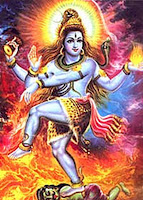Shiva’s Statue - The elements
Due to its long history, Shiva is seen as the one who unites India, not just among its many regions, but also throughout different periods, from the old to present times. Through the years, it is believed that the Shiva Statue has also undergone various evolutions to its present form. Today, the common statue of him shows of a man, sitting cross-legged, and in deep meditation. The original form is not determined, as several added elements might have been incorporated to the present form by influence of regional sects, cultures, and beliefs. This is seen in the many symbolisms that are included in his figure, such as: the river Ganges; the three eyes to depict fire, moon, and sun; the snake around his neck that represents yogic power; the blessing pose of his right hand symbolizing his power to bestow graces; the trident that signifies his power of action, will, and knowledge; his sitting on a cremation ground, which shows his power to control death on Earth, and many more.The Meaning
Shiva means “the destroyer”. Being the Supreme God of Shaivism, he is believed to be omniscient and omnipotent. Other meanings are connected with the name, such as “the pure one” and “the auspicious one”. As the “destroyer”, he is sometimes interpreted as the one who destroys demons. A more accurate explanation is that he keeps the balance of the universe and once that balance is damaged, he as the Supreme Being can destroy the universe to give way to a new start, and the cycle goes on.The Worship
The worship is mostly done on the Shiva Linga than on his other statues. This is also known as Shiva Lingam. There are two kinds, the Chala Lingam, which is mostly seen in homes, and the Achala Lingam, which is the one that is placed in temples. It is difficult to describe the form of the Linga since its objective is to become formless, as the god it represents, a formless being who is seated in your heart. The Lingam is made of white or black stone and it has three major parts, the Vishnu, Brahma, and Shiva. According to worshippers, the figure has a power to induce concentration, silent devotion, and better communication with the Lord.The Lord of Dancers
Another popular figure is the Shiva Nataraja, which shows a dancing Lord Shiva. Nataraja is a Sanskrit word that means king of dancers. The figure is believed to have been developed between the 9th and 10th century. It has four hands that represent the four directions: North, South, East, and West. There are also numerous symbolism incorporated in this figure, but in summary the dance represents a state of bliss and also symbolizes the continuous cycle of life and death, from destruction to creation, and over again.Imaged by annonetheelephant.com / hindoe.eu / en.wikipedia.org












 :)
:)
 :-)
:-)
 :))
:))
 =))
=))
 :(
:(
 :-(
:-(
 :((
:((
 :d
:d
 :-d
:-d
 @-)
@-)
 :p
:p
 :o
:o
 :>)
:>)
 (o)
(o)
 [-(
[-(
 :-?
:-?
 (p)
(p)
 :-s
:-s
 (m)
(m)
 8-)
8-)
 :-t
:-t
 :-b
:-b
 b-(
b-(
 :-#
:-#
 =p~
=p~
 :-$
:-$
 (b)
(b)
 (f)
(f)
 x-)
x-)
 (k)
(k)
 (h)
(h)
 (c)
(c)
 cheer
cheer







Wonderful, Thank you! 🙏
ReplyDeleteNamaste